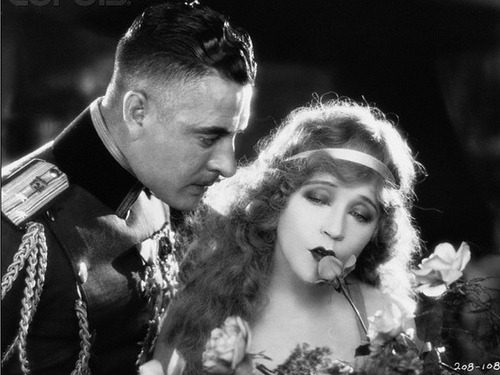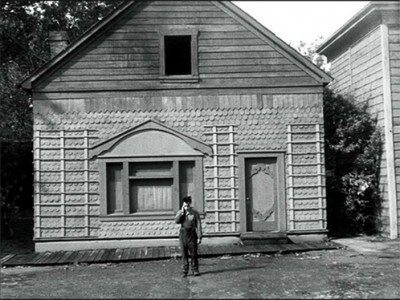The theme of my vacation did seem to be Valentino. I got to visit his grave (per usual), I went to the Silent Movie Theatre to see a showing of The Son of the Sheik starring Rudy, and then seeing and hearing about him at the Hollywood Heritage Museum. I was gonna go visit him again before I left, but I had a huge mix up with my flight and itinerary and just...yeah, nightmare.
So, I was getting all philosophical at the movie theatre watching him on screen. During scenes where the actors were being over the top dramatic and the title cards were saying some strange things, people would laugh and I realized that a lot of what Rudy did and other silent film stars did is considered cliche in movies nowadays. The main cliches are the damsel tied to the train tracks by the evil mustachioed villain and the pie in the face comedy scenes. But there is also the dark, handsome sheik (like Rudy) who is just utterly charming and irresistible. I mean, during the movie, it definitely implies that the sheik rapes Yasmin and she falls in love with him! In the original sheik movie, Diana is implied to have been raped and in the sequel she talks about not being able to resist his charms. So, in that sense it is laughable. Yes, Rudy is a babe but I think I would be kinda pissed if he raped me.
I think these cliches are what makes people hesitant about silent film (also the stupid way of thinking that just because a movie is black and white, it is stupid...I hate people who think that way). I took my mom and sister to see My Best Girl with Mary Pickford for my birthday a year ago and they both admitted that they were not that excited because of preconceived notions about silent film. But at the end, they actually both really liked it! My mom even went to a Charlie Chaplin film with me months later. But, I will say I think the cliche of having the handsome prince come and rescue you will stick around for some time. I don't care so much for Rudy the sheik storming in my house and kidnapping me, but he could come rescue me from villainous gypsies or whatever anytime.
On a sour note, I watched the 1977 movie Valentino the other night with Rudolf Nureyev as Rudy. Um, no offense to Nureyev, but what the hell was going on in that movie?! I turned it off after about 10 minutes. It makes no sense, Rudy is portrayed as some weird caricature of the real Rudy (it makes sense, really) and it was a total disappointment. Save your time and don't watch it.

















_05.jpg)




_03.jpg)
